1. Early life and path to the throne
John III's early life saw him appointed as the Duke of Finland, a role that shaped his early political ambitions and set him on a collision course with his half-brother, Erik XIV, eventually leading to his imprisonment and subsequent rise to the throne.
1.1. Birth and early life
Born on December 20, 1537, at Stegeborg Castle, John III was the eldest son of Gustav I of Sweden, the founder of the House of Vasa, and his second wife, Margaret Leijonhufvud. On June 27, 1556, he was appointed the hereditary Duke of Finland Proper, a strategic placement by his father to secure Swedish territory in the eastern Baltic region against potential Russian threats. During his time as Duke, John developed a keen interest in liturgy and theology.

In his early activities, John also maintained a relationship with his lady-in-waiting, Karin Hansdotter, between 1556 and 1561, during which they had four illegitimate children. He also cooperated with his half-brother Erik XIV, even traveling to London on Erik's behalf, where he observed the reintroduction of Protestantism and the Book of Common Prayer (1559).
1.2. Conflict with Erik XIV and imprisonment
The relationship between John and his half-brother, King Erik XIV, quickly deteriorated after Erik's ascension, as the new monarch sought to assert strict royal control. As Duke of Finland, John openly opposed Erik's efforts to secure Reval and other key ports in the eastern Baltic. The tension culminated when John, against Erik's explicit prohibition, married Catherine Jagiellon in Vilnius on October 4, 1562. Catherine was the younger sister of Sigismund II Augustus, the reigning King of Poland, with whom Erik was at war.
Shortly after their wedding, John and his new brother-in-law concluded an agreement whereby John would receive seven permanent castles in Livonia as a pledge for an advance of 120,000 daler from the Polish king. Erik considered this agreement a direct violation of the Articles of Arboga (1561), which had previously restricted John's ducal powers. When John refused to cede the Livonian castles or declare his unequivocal allegiance to Sweden, he was summoned in April 1563 on charges of treason.
Upon his defiance, the Riksdag of the Estates, assembled in Stockholm in June 1563, found him guilty of treason and stripped him of his life, property, and hereditary rights to the kingdom. A considerable army was dispatched to enforce the sentence. John, unprepared for battle, defended Turku Castle with 1,200 men for several weeks before surrendering on August 12, 1563, during the Siege of Åbo (1563). He was subsequently transported to Sweden and imprisoned at Gripsholm Castle along with his wife. While being brought to Gripsholm by ship, they passed through Söderport, where 30 of John's supporters were executed. Despite this, John's imprisonment was relatively lenient compared to Erik's later experiences; the couple was allowed to receive a large shipment of books, and John, who was bookish, spent much time studying and conversing with Catherine. Their three legitimate children were born during this captivity: Elizabeth (1564), Sigismund (1566), and Anna (1568).
1.3. Release and revolt
The circumstances of John's release were closely tied to Erik XIV's deteriorating mental health, which became increasingly apparent in the fall of 1567, notably marked by the Sture Murders. John's release was secured in October 1567, leading to negotiations for the restoration of his ducal rights.
However, Erik's erratic behavior in the first half of 1568 fueled John's fears that his newly acquired freedom might be revoked. This prompted John to forge an agreement with his younger brother, Duke Charles, and a faction of the nobility, initiating a concerted uprising against Erik's increasingly unpopular rule. The revolt, which commenced in July 1568, spread rapidly, leading the dukes' army to besiege Stockholm by mid-September. On September 29, 1568, the city gates were opened to them, resulting in Erik XIV's capture. A key ally in this rebellion was John's maternal uncle, Sten Leijonhufvud, who was fatally wounded during the conflict and posthumously elevated to Count of Raseborg.
Immediately following Erik's imprisonment, John was hailed as King by the city authorities, nobility, and warriors gathered in Stockholm. Shortly thereafter, John ordered the execution of Jöran Persson, Erik's most trusted counselor, whom John held largely responsible for the harsh treatment he endured during his own imprisonment.
2. Reign
During his reign, John III undertook significant efforts to consolidate his power, implement domestic policies, conduct foreign affairs, and shape the kingdom's religious and cultural landscape.
2.1. Consolidation of power and domestic policies
In January 1569, John III was formally recognized as King by the Riksdag of the Estates, the same assembly that had previously forced Erik XIV from the throne. This recognition, however, came with notable concessions. Duke Charles's dukedom was confirmed without the restrictions that had been imposed by the Articles of Arboga, and the nobility received new privileges that significantly extended their rights and limited their obligations, marking a crucial development in the history of the Swedish nobility. Furthermore, the higher nobility was granted special privileges that reinforced the class distinctions within the aristocracy.
These noble privileges began to blur the line between the frälse-men (tax-exempt nobility) and commoners. Prior to John's reign, the concept of tax exemption for nobility was tied to an obligation, such as providing horsemen, and if a noble could no longer afford to fulfill this army service, they would typically descend back to the peasantry. Many frälse-men were, in fact, wealthy peasants who lived similarly to commoners. John's new privileges allowed nobles, even those too poor to serve in the army, to retain a noble shield and status. He also created new counts and barons, granting them large estates known as countships and baronies, which were to be inherited by the nearest male heir. Under Erik XIV, only counts had been granted small estates, but John significantly expanded these, with counties increasing to include up to 20 parishes, and counts gaining jurisdiction over the population within their territories.
Despite securing the throne, John remained insecure as long as his captive half-brother, Erik XIV, was alive. This fear manifested in the discovery of three plots aimed at his deposition: the 1569 Plot, the Mornay Plot, and the 1576 Plot. Driven by constant anxiety over Erik's potential release, John issued an order in 1571 for Erik's guards to assassinate the imprisoned king should there be any attempt at rescue. It is widely believed that Erik's life ended in 1577 as a direct consequence of this order, indicating John's willingness to eliminate any perceived threat to his reign.
For propaganda purposes, John III frequently drew parallels between his own rule and that of his father, Gustav I of Sweden. He notably emphasized that just as Gustav had "liberated Sweden" from the "bloodhound" Christian II, he himself had saved the population from the "tyrannical" Erik XIV, his own brother. John shared some characteristics with his father and brothers, including a violent and fierce temperament and a strong sense of suspicion. However, he was often criticized for lacking sharpness, firmness, prudence, and practical administrative skills.
Initially, John relied on the council aristocracy for governance. However, after his son Sigismund ascended the Polish throne in 1587 and faced opposition from the high nobility regarding his return to Sweden, John shifted his strategy. He sought the assistance of his brother Duke Charles, with whom he had previously had a bitter relationship. As king, John had attempted to apply the same principles of royal rights within Charles's principality that he had vehemently opposed when he was a duke. By 1587, he had succeeded in persuading Charles to approve statutes very similar to the Articles of Arboga, which John himself had repealed in 1569. However, after his break with the high nobility, John appeared to abandon these claims on princely rights, as indicated by a 1590 proposal for a new arrangement. This renewed friendship with Charles, however, proved temporary, and in the final months of his life, John found himself completely isolated.
2.2. Foreign policy and wars
John III's foreign policy was largely focused on securing Sweden's position in the Baltic Sea region and consolidating its gains from previous conflicts. He initiated peace negotiations with Denmark-Norway and Lübeck to bring an end to the protracted Northern Seven Years' War. Although his envoys accepted significant Danish demands in the Treaties of Roskilde (1568), John ultimately rejected these terms. After two more years of fighting, the war was concluded in 1570 with the Treaty of Stettin (1570), which did not require many Swedish concessions.
Following this, Sweden became involved in the Livonian War with Russia, a conflict that lasted with varying intensity until 1595. John III's greatest military success came with the capture of Narva in 1581. The war largely concluded for Sweden with the Treaty of Plussa in 1583, which saw the Swedish reconquest of Narva and the securing of Estonia. His foreign policy was significantly influenced by his close ties with Poland, a relationship that culminated in his son, Sigismund III Vasa, being elected King of Poland in 1587. John envisioned a new union, aiming to gain control over the lucrative trade routes with Russia across the Baltic. However, this union proved to be complex and often led to conflicting interests between Sweden and Poland, which later contributed to internal unrest among the Swedish nobility.
2.3. Church policy and the Liturgical Struggle
John III was a monarch with a profound interest in religion and theology, often described as a deeply religious ruler. His church policies were significantly influenced by his Catholic sympathies, which were largely inspired by his first wife, the Polish princess Catherine Jagiellon. These leanings created considerable friction with the predominantly Lutheran Swedish clergy and nobility.
Initially, John's relations with the Church of Sweden were relatively stable. While Archbishop Laurentius Petri hesitated to support John's rebellion against Erik XIV, he later ratified a new Church Order that emphasized continuity with older traditions and restored the medieval ecclesiastical organization, including its dioceses. In 1575, John also granted permission for the few remaining Catholic convents in Sweden to resume accepting novices.
These actions were part of John's broader mediating theology, which aimed to reduce the contradictions between the various rival faiths tearing Europe apart at the time. John himself was a learned follower of the mediating theologian George Cassander, and he sought reconciliation between Rome and Wittenberg based on the `consensus quinquesaecularis` (the consensus of the first five centuries of Christianity). This concept resonated with other European rulers, such as King Sigismund II Augustus of Poland and Emperors Ferdinand I and Maximilian II, who also had multiple faiths within their empires.
In 1571, John approved the publication of Archbishop Laurentius Petri's Lutheran Swedish Church Order. However, in 1575, he also secured the church's approval for an addendum to the church order, the `Nova ordinantia ecclesiastica`, which indicated a return to patristic sources. This paved the way for John's most controversial religious initiative: the promulgation of the Swedish-Latin Red Book, officially titled Liturgia suecanae ecclesiae catholicae & orthodoxae conformis. This new liturgy reintroduced several Catholic customs, triggering the prolonged Liturgical Struggle, which endured for twenty years.
John also attempted to negotiate directly with the Pope in Rome, but these efforts ultimately failed, partly due to the drowning of his confidant in these matters, Petrus Michaelis Fecht, during his journey to Rome. He also sought the papacy's assistance in securing the release of his wife's family assets, which were frozen in Naples. Furthermore, he discreetly allowed Jesuits to staff the Royal Theological College in Stockholm.
These religious policies frequently put John at odds with his younger brother, Duke Charles of Sudermannia, who harbored Calvinist sympathies and consequently refused to promote the King's liturgy in his own duchy. This opposition was clearly expressed in the Örebro Articles, where priests in Duke Charles's duchy publicly distanced themselves from the new order of worship. Despite this, John did receive support for his church policy from figures such as Ingelbertus Olai Helsingus and Erasmus Nicolai Arbogensis. However, by 1580, he recognized that a full settlement with Rome was unlikely, though he continued to insist on the "Red Book" despite the opposition it generated. At the side of his strictly Protestant second wife, Queen Gunilla Bielke, John's zeal for Catholic doctrine also gradually waned.
2.4. Patronage of arts and architecture
John III was an exceptionally enthusiastic patron of the arts, particularly architecture, and is often considered the most building-minded monarch in Sweden's history. He possessed a keen artistic and aesthetic sensibility, which found its most pronounced expression in the design and construction of buildings. He dedicated considerable time to drawing up elaborate plans for various structures, though only a fraction of these ambitious designs were realized during his lifetime. In his own words, "Building is our highest desire," a sentiment evident in his numerous letters detailing orders to his architects and builders.
John actively sought out and recruited skilled builders, sculptors, and painters from Germany and the Netherlands. He personally intervened in the prolific building activities he commissioned across the kingdom, often providing his own drawings. His surviving correspondence on building matters demonstrates his understanding of architecture and his familiarity with the principles of the Italian Renaissance, specifically the High and Late Renaissance styles. He would advise and admonish his architects, correct their drawings, and delight in the intricate details of architecture and decoration, especially focusing on magnificent portals, windows, ornate gables, and richly decorated spires on exteriors, and rich paneling and door frames in interiors. The architectural books of Sebastiano Serlio appear to have been a frequent source of inspiration for him. John's personal taste thus profoundly influenced the distinctive art movement that emerged during his reign.
Among the large circle of artists and craftsmen surrounding John III, several prominent figures included the Swedish builder Anders målare, Willem Boy (important as both a sculptor and architect, renowned for creating John's tomb in Uppsala), and the Vadstena architects Arendt de Roy and Hans Fleming. John also employed many foreign masters, notably the three members of the Pahr family of architects from Lombardy: Franciscus Pahr, associated with Uppsala, and Johan Baptista Pahr and Dominicus Pahr, linked to Borgholm Castle and Kalmar Castle. Other foreign experts included the stucco artist and master builder Antonius Watz, Peter Hertig (the chief builder for Finland and Livonia), carvers Markus Wulfrum and Urban Schultz, painters Johan Baptista van Uther and Arent Lambrechts, and stonemasons and sculptors such as Roland Mackle, Peter de la Koche, and Lukas van der Werdt. He also recruited foreign experts for agricultural matters, including foresters from German principalities and Denmark.

A particular focus of John III's building interest was the preservation and restoration of older monumental buildings, along with a keen concern for the aesthetic appearance of cities. He oversaw the restoration of several major cathedrals, including those in Uppsala, Västerås, Linköping, and Skara. In Finland, Turku Cathedral was restored and given a new chancel, and St. Mary's Cathedral in Tallinn, Estonia, was also renovated. Among the monastery churches that were more or less destroyed and subsequently renovated were Varnhem, Vreta Abbey, Alvastra, Askeby, Gudhem, and Naantali in Finland. In Stockholm, Storkyrkan, Riddarholmen Church, and the German Church (originally a medieval guildhall that also served the Finnish congregation and was long known as Saint Henry's Church) were restored. He also initiated the construction of new churches, such as St. Clare's Church on the site of the former St. Clare's Priory, which had been demolished by Gustav I, and St. James's Church, whose construction began in 1580 under the supervision of Willem Boy and Hendrik van Huwen, though it was not completed and inaugurated until 1643. Other planned churches, such as a Trinity Church, were never built.
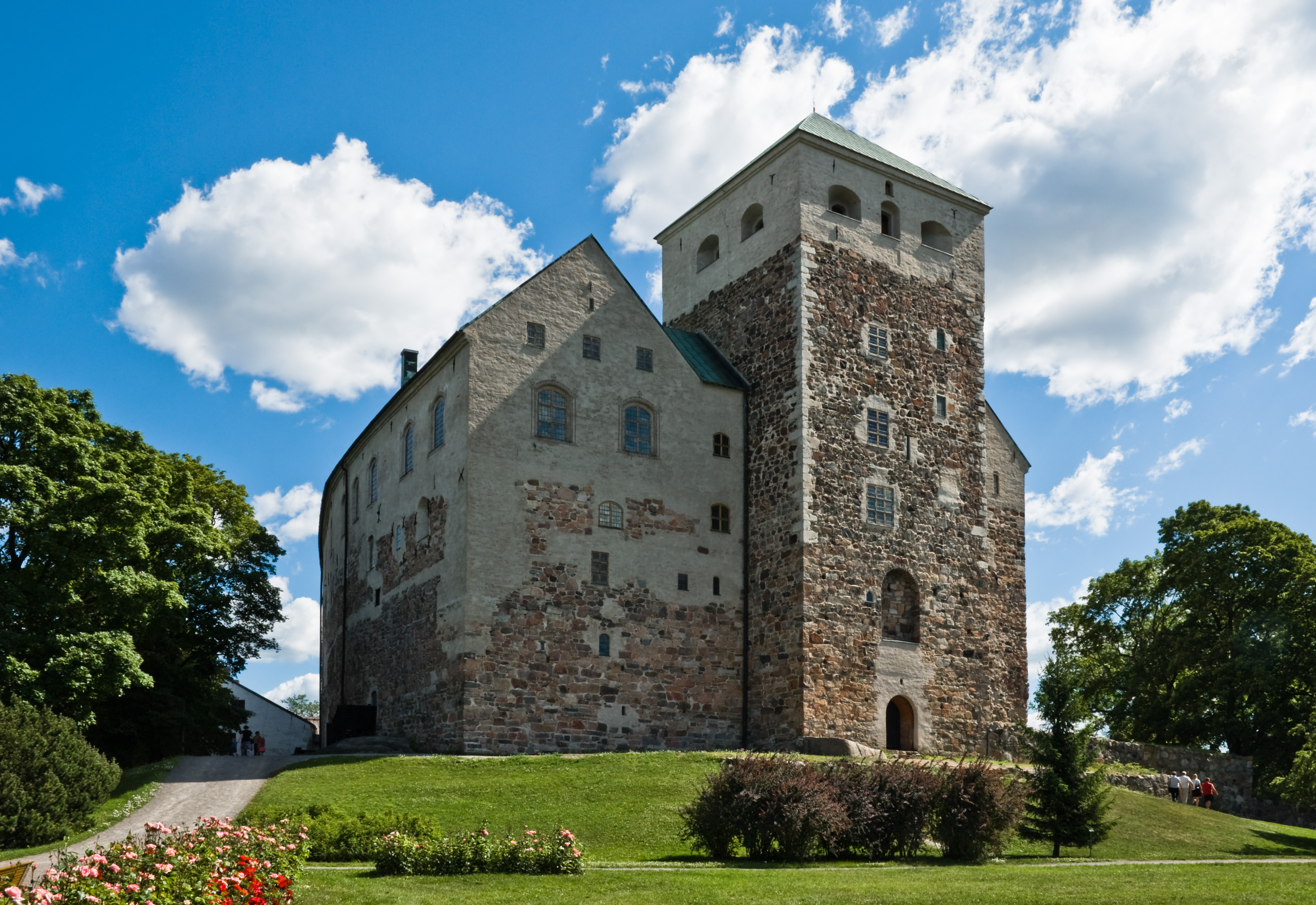
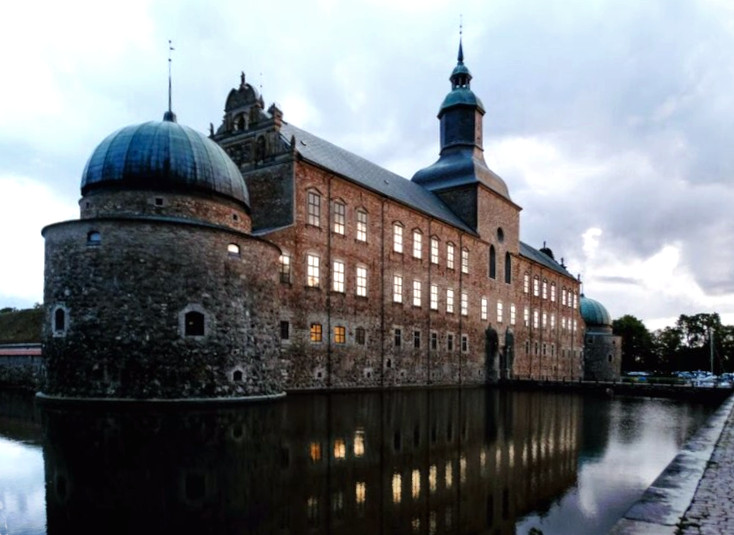
John III also significantly engaged in the construction and renovation of castles and fortresses. He incorporated chapels into all his major castles, with those at Vadstena Castle and Kalmar Castle remaining partially or well-preserved examples. His ecclesiastical building activities often preserved Gothic traditions, even in fine detail. Many castle and fortress projects were inherited from the reigns of Gustav I and Erik XIV, while others were entirely new initiatives by John III. The Tre Kronor Palace in Stockholm underwent substantial extensions and redecorations, particularly its northern courtyard and castle church, which retained their character until the devastating Castle Fire in 1697.
Uppsala Castle was rebuilt after a fire in 1572, transforming into a brick building with rusticated plaster and two round towers. Vadstena Castle, originally founded by Gustav I, was expanded into the splendid Renaissance palace seen today, although its full completion according to the original plan extended into the early 17th century. Svartsjö Palace stood as a unique architectural curiosity, featuring a circular arcaded courtyard and a domed church on either side of an older stone house.
At Kalmar Castle, where John frequently resided due to its strategic proximity to Poland, the courtyard's perimeter was completed, and the floors were leveled, while the costly interior decoration initiated under Erik XIV was continued. John III's most ambitious new construction project was Borgholm Castle, designed with a perfectly regular plan, outstanding spaciousness, magnificence, and strong fortifications, though it remained unfinished during his lifetime. Other significant new constructions included Bråborg Castle, intended as a widow's residence for Queen Gunilla, and the older Drottningholm Palace (which later burned down in 1661), built on one of the islands in Lake Mälaren at the request of Catherine Jagiellon.
Rebuilding efforts also extended to Turku Castle, Västerås Castle, Gävle Castle, Stegeborg Castle, and Linköping Castle, almost all of which featured significant fortifications. As purely military strongholds, places like Älvsborg, Gullberg, Kronoberg Castle, Kexholm, and Vyborg saw substantial fortification work, which the king closely followed. Sweden, during this period, was at the forefront of fortification art in the Nordic countries, largely due to the introduction of the new Italian system by the Pahr brothers.
Among his monumental works of sculpture, the most noteworthy are the funerary monuments of his father Gustav I and his first two wives, as well as the beautiful tomb of Catherine Jagiellon, all located in Uppsala Cathedral. John III's own tomb monument, commissioned by his son Sigismund from the sculptor Willem van den Blocke in Danzig, only arrived in Sweden in 1782 through the efforts of Gustav III and was erected in its current location in 1818. Its arrangement, initially incorrect, was later redesigned by Agi Lindegren during the church's restoration in the early 1890s.
3. Personal life
John III's personal life was marked by two marriages and several children, including both legitimate and illegitimate offspring.

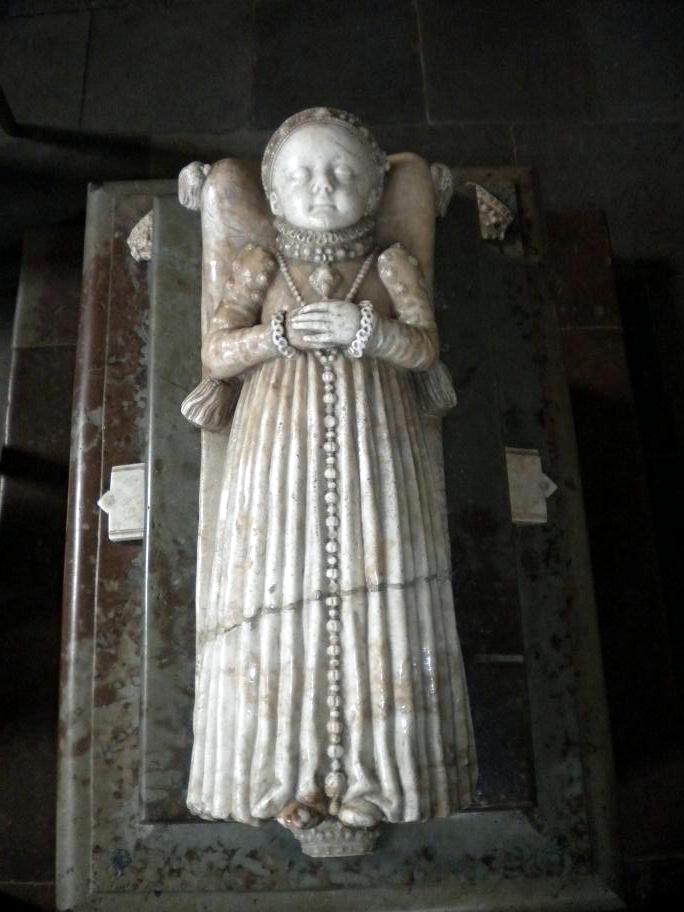
His first marriage was to Catherine Jagiellon (known in Sweden as Katarina JagellonicaSwedish), a Polish princess and sister of King Sigismund II Augustus of Poland. They married in Vilnius on October 4, 1562. From this union, they had three children:
- Elizabeth (Isabella) (1564-1566), who died in early childhood.
- Sigismund III Vasa (1566-1632), who would later become King of Poland (1587-1632) and King of Sweden (1592-1599), as well as Grand Duke of Finland and Lithuania.
- Anna (1568-1625).
Catherine Jagiellon died in 1583.
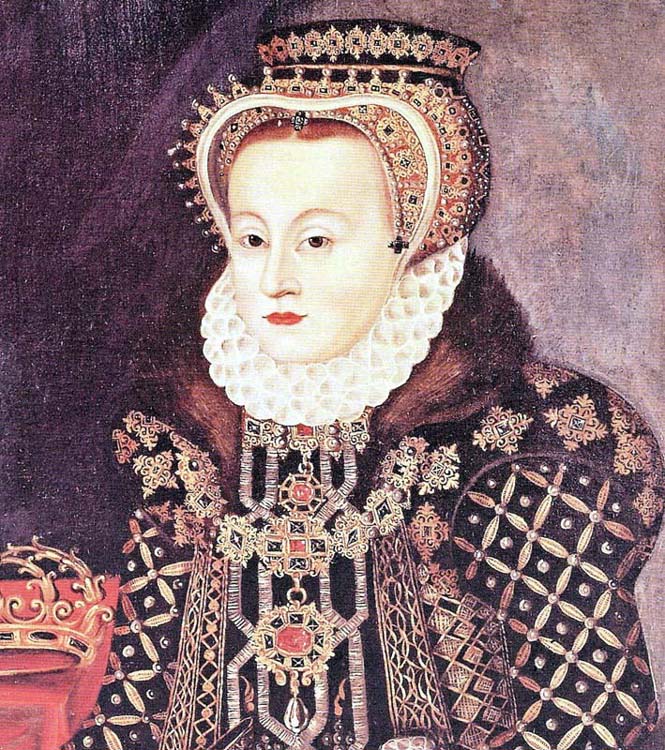
John III then married his second wife, Gunilla Bielke (1568-1597), on February 21, 1585. They had one son:
- John (1589-1618), who initially held the title of Duke of Finland before becoming Duke of Ostrogothia from 1608. He later married his first cousin, Maria Elisabet, daughter of Charles IX of Sweden.
Prior to his first marriage, John III had a relationship with his mistress, Karin Hansdotter (1532-1596), between 1556 and 1561. They had at least four illegitimate children, who took the surname Gyllenhielm:
- Sofia Gyllenhielm (1556-1583), who married Pontus De la Gardie. She later died giving birth to Jacob De la Gardie.
- Augustus Gyllenhielm (1557-1560).
- Julius Gyllenhielm (1559-1581).
- Lucretia Gyllenhielm (1560-1585).
John consistently cared for Karin and their children even after his marriage to Catherine Jagiellon in 1562. In 1561, he arranged for Karin to marry Klas Andersson (Westgöthe), a nobleman who was a friend and servant of John. They had a daughter named Brita. After Klas Andersson was executed for treason by Erik XIV in 1563, Karin remarried Lars Henrikson in 1572. In 1576, John ennobled Lars Henrikson to ensure the continued care of his children with Karin. The same year, he appointed his daughter Sofia as a lady at the castle, serving his sister Princess Elizabeth of Sweden. Sofia later married Pontus De la Gardie in 1580.
4. Death
In the spring of 1592, John III fell ill with a fever, which caused him great anxiety. Hoping for an improvement in his health, he moved to a pleasure garden he had constructed on Skeppsholmen, believing the air there to be healthier than in the city. However, his condition showed no improvement and worsened significantly during the high summer.
John III died in Stockholm on November 17, 1592. At the time of his passing, the kingdom was left in a precarious state, weakened by ongoing external and internal strife, marked by disorder and neglect, and facing significant future dangers. He is interred in Uppsala Cathedral.
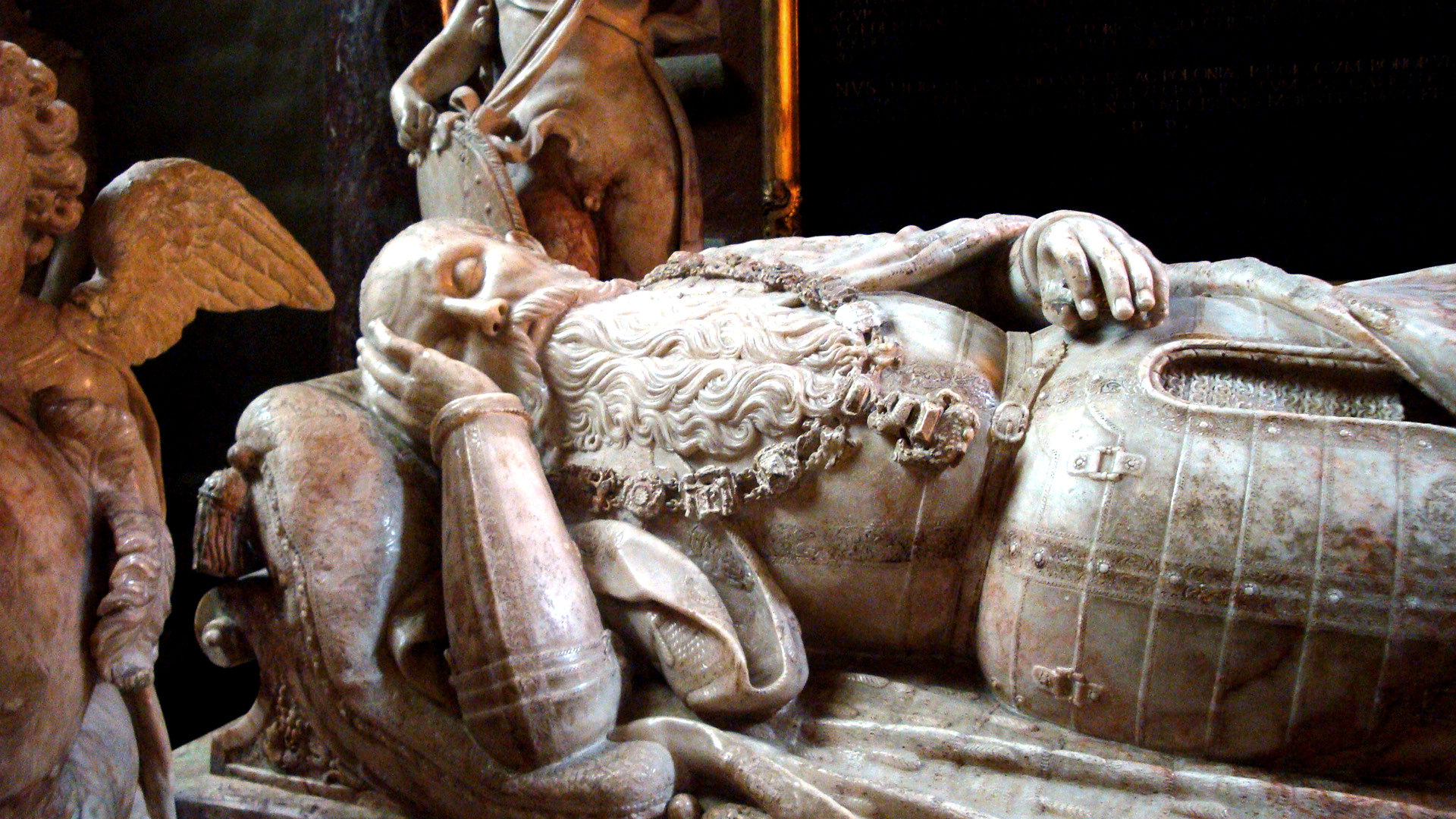
5. Legacy and historical evaluation
John III's historical legacy is a complex one, encompassing significant achievements, notable criticisms, and lasting influence.
5.1. Positive aspects and contributions
John III's reign yielded several positive contributions to Sweden. In foreign policy, he successfully brought the long and costly Northern Seven Years' War to a close in 1570 with the Treaty of Stettin, which avoided major Swedish concessions. His greatest military achievement was the capture of Narva in 1581 during the Livonian War against Russia, which was a crucial step in expanding Finland's eastern border and securing Swedish influence in the Baltic. He was also a deeply religious ruler who genuinely attempted church reform, aiming to reconcile Lutheranism and Catholicism, even if these efforts faced considerable opposition.
Perhaps his most enduring and widely acknowledged legacy is his extraordinary patronage of arts and architecture. John III is often regarded as the most prolific building monarch in Swedish history, possessing a remarkable artistic and aesthetic talent. He initiated extensive restoration projects for prominent cathedrals like Uppsala, Västerås, Linköping, and Skara, as well as numerous churches and monasteries across the kingdom. He also oversaw the significant expansion and renovation of many castles and fortresses, including Tre Kronor Palace, Uppsala Castle, Vadstena Castle, and Kalmar Castle. His keen aesthetic sense and active involvement transformed many royal residences and public buildings. Furthermore, he was instrumental in introducing the advanced Italian system of fortification to Sweden, placing the country at the forefront of military engineering in the Nordic region. He also commissioned important sculptural works, such as the funerary monuments in Uppsala Cathedral for his family.
5.2. Criticisms and controversies
Despite his accomplishments, John III's reign was marked by significant criticisms and controversies. The most severe and enduring accusation is his alleged involvement in the death of his half-brother, Erik XIV. Driven by constant fear of Erik's potential release and discovery of plots against him, John issued a chilling order in 1571 for Erik's guards to assassinate the imprisoned king should any rescue attempt be made. Erik's death in 1577 is widely believed to have been a direct consequence of this order, highlighting John's ruthless resolve to eliminate threats to his throne.
Administratively and financially, John III faced considerable criticism. He was perceived by some as a poor administrator and has even been described as the "worst financial manager" of his time, which contributed to leaving the kingdom in a state of disorder and neglect by the end of his reign. His ambition to place his Catholic son, Sigismund, on the Polish throne, while a strategic political move, created what was perceived as an "unnatural union" between Sweden and Poland due to their frequently conflicting interests. This decision generated widespread dissatisfaction among the Swedish high nobility, who feared potential Catholic dominance over Sweden and the likelihood of future wars with Poland.
Furthermore, his determined attempts to reintroduce Catholic practices and reconcile the Church of Sweden with Rome through the "Red Book" ignited the protracted Liturgical Struggle, causing deep theological divisions and significant opposition, particularly from his brother, Duke Charles. These ambitious religious goals remained largely unachieved by the time of his death. In his final months, John found himself increasingly isolated, with his relationship with Duke Charles also cooling, leaving him alone at the end of his life.
5.3. Influence and memorials
John III's legacy is recognized in certain enduring ways. The Finnish city of Pori uses his personal motto, `Deus Protector Noster` (Latin for "God is our protector"), as its municipal motto. In 2008, a statue of Duke John was unveiled in front of the Pori Old Town Hall in commemoration of the city's 450th anniversary, acknowledging his role in its founding.
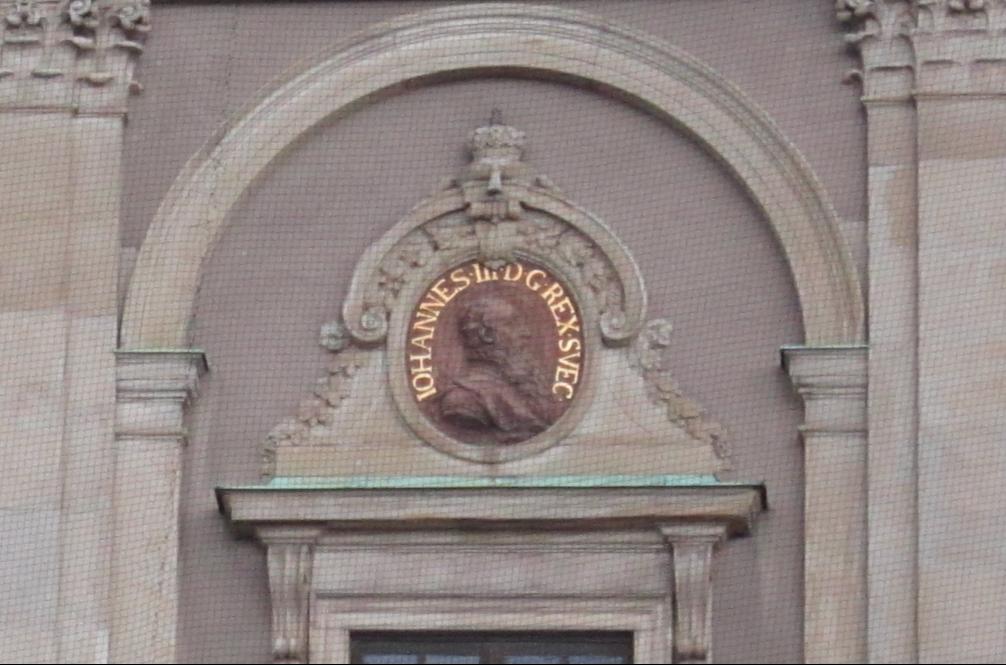
6. Ancestry
The following is the ancestry of John III of Sweden:
- 1. John III of Sweden
- 2. Gustav I of Sweden
- 3. Margaret Leijonhufvud
- 4. Erik Johansson Vasa
- 5. Cecilia Månsdotter Eka
- 6. Erik Abrahamsson Leijonhufvud
- 7. Ebba Eriksdotter Vasa
- 8. Johan Kristiernsson Vasa
- 9. Birgitta Gustavsdotter Sture
- 10. Måns Karlsson Eka
- 11. Sigrid Eskilsdotter Banér
- 12. Abraham Kristiernsson Leijonhufvud
- 13. Birgitta Månsdotter Natt och Dag
- 14. Erik Karlsson Vasa
- 15. Anna Karlsdotter Vinstorpa